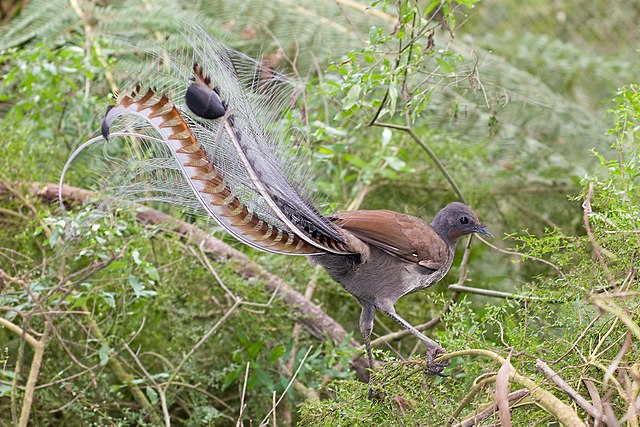The birds-of-paradise are members of the family Paradisaeidae of the order Passeriformes. The majority of species are found in eastern Indonesia, Papua New Guinea, and eastern Australia. The family has 45 species in 17 genera. The members of this family are perhaps best known for the plumage of the males of the species, the majority of which are sexually dimorphic. The males of these species tend to have very long, elaborate feathers extending from the beak, wings, tail, or head. For the most part, they are confined to dense rainforest habitats. The diet of all species is dominated by fruit and to a lesser extent arthropods. The birds-of-paradise have a variety of breeding systems, ranging from monogamy to lek-type polygamy.
Bird-of-paradise
Sicklebills such as this brown sicklebill have decurved bills.
Fruits of the genus Heptapleurum are an important part of the diet of the ribbon-tailed astrapia.
A male Victoria's riflebird displays and is inspected by a female.
A passerine is any bird of the order Passeriformes which includes more than half of all bird species. Sometimes known as perching birds, passerines generally have an anisodactyl arrangement of their toes, which facilitates perching.
Passerine
Pterylosis or the feather tracts in a typical passerine
Male superb lyrebird (Menura novaehollandiae): This unique songbird shows strong sexual dimorphism, with a peculiarly apomorphic display of plumage in males.
Wieslochia fossil








